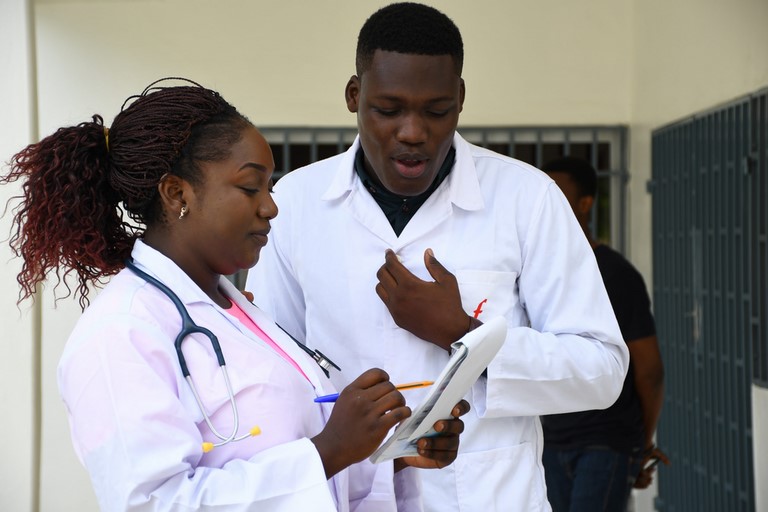Technologie d'imagerie médicale

1. Objective of the training
Given the current complexity of radiodiagnostic and radiotherapy techniques (computer science, quality assurance, etc.),
on the one hand, and the requirements in terms of radiation protection and health safety (determination of effective doses in radiology, for example), on the other hand, It is necessary to set up a university level training to meet the current needs of hospitals in qualified professionals. It is wise to take into account, the phenomenon of staff turnover due to retirements and,
to give technical managers the possibility of continuing their studies in a rapidly expanding field. This is the objective of the HND specialty Radiology and medical imaging.
2. Opportunities
- Public function;
- Hospitals and private clinics;
- NGOs (Non Governmental Organizations);
- Self-employment;
- Agribusiness ;
- Occupational Medicine ;
- Research and training.
3. Research Skills
- Be responsible and reflective;
- Have gestural skills and interpersonal skills;
- Recognize your emotions and use them with the necessary professional skills;
- Have proven trust and confidence;
- Have critical ability and questioning;
- Develop a professional ethic and normal;
- make thoughtful decisions;
- Act with autonomy and responsibility in the well-defined fields of its function;
- Track the inventory status of consumables, set up replenishment orders and arrange equipment storage;
- Check the operation of the devices, update the maintenance register and inform in case of malfunction;
- Master the computer tool and ICT.
- Research and process scientific professional data;
- Perform medical imaging (conventional radiology, MRI, CT scan, ultrasonography) diagnosis or pathology screening according to the medical prescription;
- Be able to perform dosimetric calculations;
- Calculate the doses of radioactive products of a preparation according to the treatment of a patient;
- Control the application of Quality-Safety and Environment procedures;
- Perform magnetic resonance imaging (MRI) examinations using radiographic techniques;
- Check the conformity of a sensitive equipment or installation;
- Perform CT examinations according to X-ray techniques;
- Perform mammography examinations using radiographic techniques;
- Be able to use ionizing radiation to destroy tumors or to intervene in nuclear medicine.
